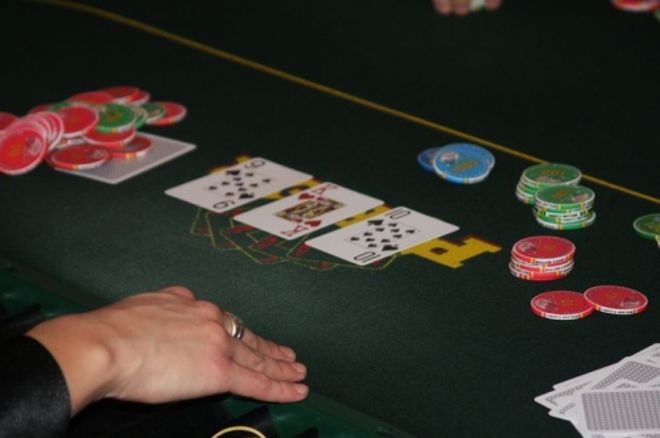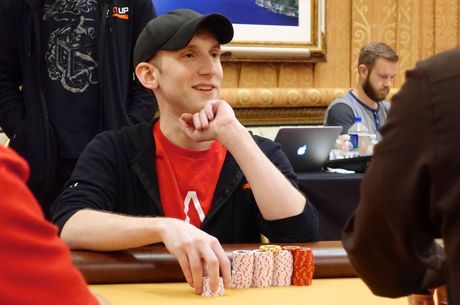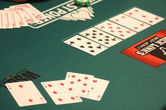Don't Be Half-Hearted With Your Semi-Bluffs

The semi-bluff may well be one of the least understood postflop moves in poker. Perhaps part of the trouble has to do with the name, which if you think about it could be a little misleading.
For one thing, a semi-bluff is not a "half-bluff" or even a "partial bluff," even if that's what the name might seem to imply. It's a bluff, all right, just like regular, full-blown, "pure" bluffs. It's just that a semi-bluff has a backup plan, so to speak, since an opponent folding to it is not the only desired result.
Then again, getting an opponent to fold to your semi-bluff is absolutely desired — indeed, if that's not the case, then you're not really semi-bluffing.
The semi-bluff is an important move in practically all poker variants. In no-limit hold'em, it is made either on the flop or turn — that is, after the flop, but with cards still to come. It can be a leading bet, a raise, or a check-raise, and when used effectively can be a very powerful tool to give players more chances to win pots.
In most cases, the semi-bluff emerges as a recommended move to make when holding either a drawing hand or some other likely-to-be inferior hand that still has potential to improve to a winner should the bluff be called.
For example, the button raises preflop and the big blind calls with 8♣7♣, and both watch a flop come K♥9♣6♦. The big blind checks, the button bets, then the big blind check-raises as a semi-bluff. The big blind knows he's almost certainly behind in the hand, but with an open-ended straight draw and backdoor club flush draw check-raises and can win the hand right there if his opponent folds.
The potential to improve to a straight on the turn — or a flush on the river should the next two streets bring clubs — is what changes the move from a straightforward bluff to a semi-bluff. That's because while a fold would be a good result, should the big blind's opponent call the check-raise he still has the potential to improve to a better hand that would win at showdown.
However, if the player is 100% certain his opponent will not fold to his check-raise, he's not semi-bluffing. Rather, he's value betting, albeit incorrectly (i.e., with a currently worse hand), simply betting "on the come" and building a bigger pot he can only win should he indeed improve before the showdown.
This is where some new players run into difficulty with semi-bluffs — that is, not committing fully to what is in nearly all cases "Plan A" for the hand, namely, eliciting a fold (with "Plan B" being continuing on with hopes of improving after the bluff is called).
As with regular bluffs, the "story" behind the semi-bluff needs to be believed, adding up to a situation that convinces an opponent you have a stronger hand and a fold is in order.
In the above example, a K♥9♣6♦ flop (in many cases) more likely favors the big blind's range of hands than the late-position raiser's range, making the check-raise a good bluff as it can fold out many better hands than the one the big blind bluffer has.
Depending on various factors, the semi-bluffer may feel more or less glad about being called and continuing with the hand, having missed out on winning the pot right there without having to improve any further. With a very strong draw (say both flush and straight draws on the flop) having your semi-bluff called is not at all bad. Meanwhile with a weak hand (say bottom pair) the call may be less agreeable, but you have at least some equity going forward and can still improve to the best hand.
But don't regard these different degrees of satisfaction (or disappointment) when your semi-bluffs get called as reason to be ambivalent about your opponent's response. Getting an opponent to fold the best hand after you semi-bluff is always a positive — your opponent is making a mistake, really, that increases your profit while eating into his.
Again, if your opponent folds to your semi-bluff and you're disappointed, well, you weren't really semi-bluffing. If you wanted a call, you were betting for value.
While there do exist multiple outcomes that can make a semi-bluff a good play to make, that doesn't mean the play should be considered a "compromise" or be undertaken half-heartedly.
For example, a blocking bet is sometimes just such a "compromise" play — that is, a small postflop bet made from out of position designed to prevent an opponent from making a bigger bet. It's not really a full bet for value, but it's not a check, either — it's kind of an in-between move. Many postflop calls could be regarded as "compromise" plays, too — halfway between folding and raising.
But even though the semi-bluff sounds like another kind of compromise — like a half-bluff, half-something else — it's not. It's a bluff all right, or at least should be thought of as one.
Want to stay atop all the latest in the poker world? If so, make sure to get PokerNews updates on your social media outlets. Follow us on Twitter and find us on both Facebook and Google+!









